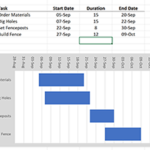
In project management, a stakeholder is anyone who is affected by the project. This can be a real or perceived effect. Some are supportive and some are opposed to the project. Some have alot of influence and some have a little. Some are easy to persuade and some are not. But they all have a "stake" therefore project success and stakeholder management are integrally … [Read more...]












